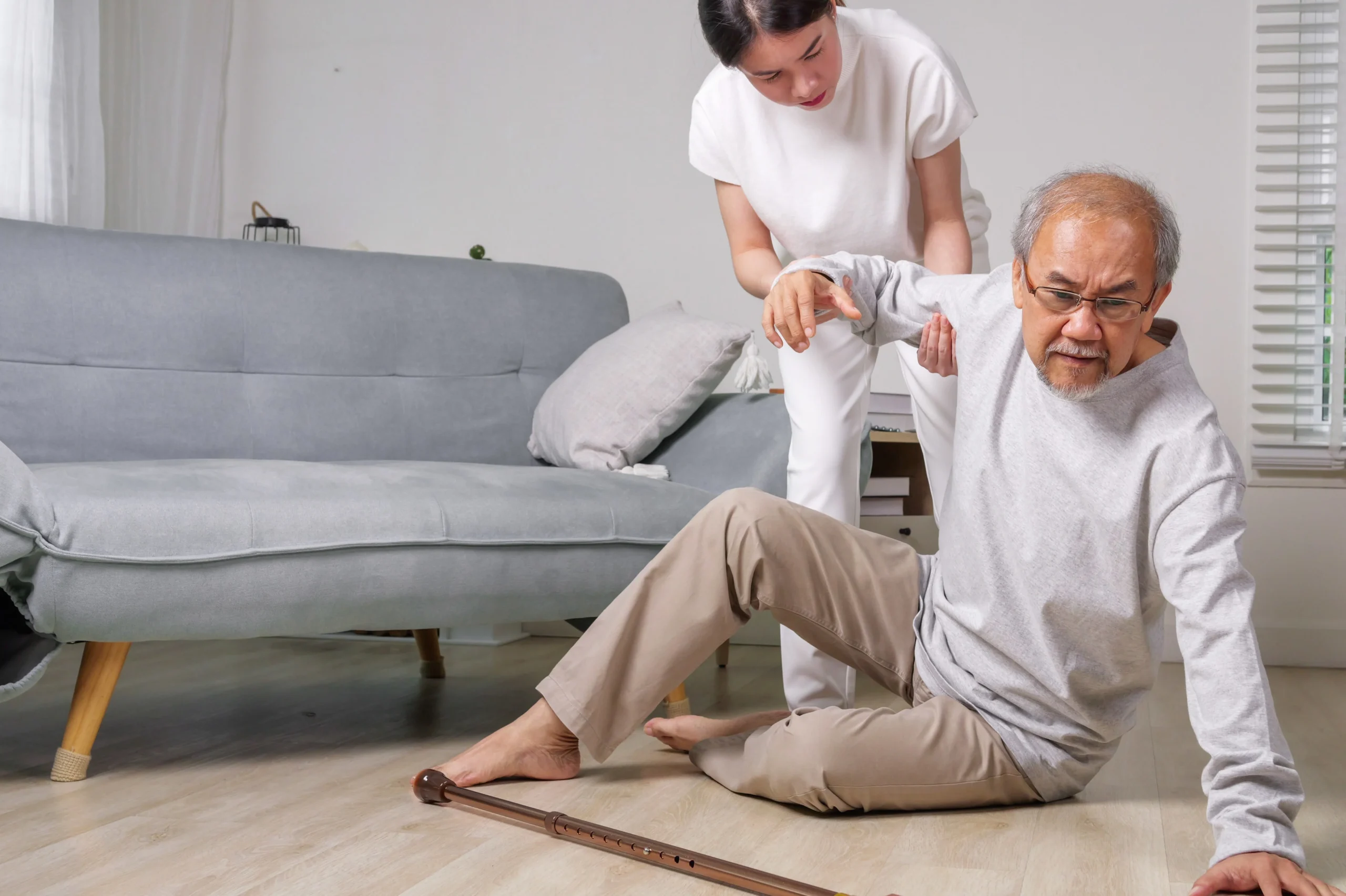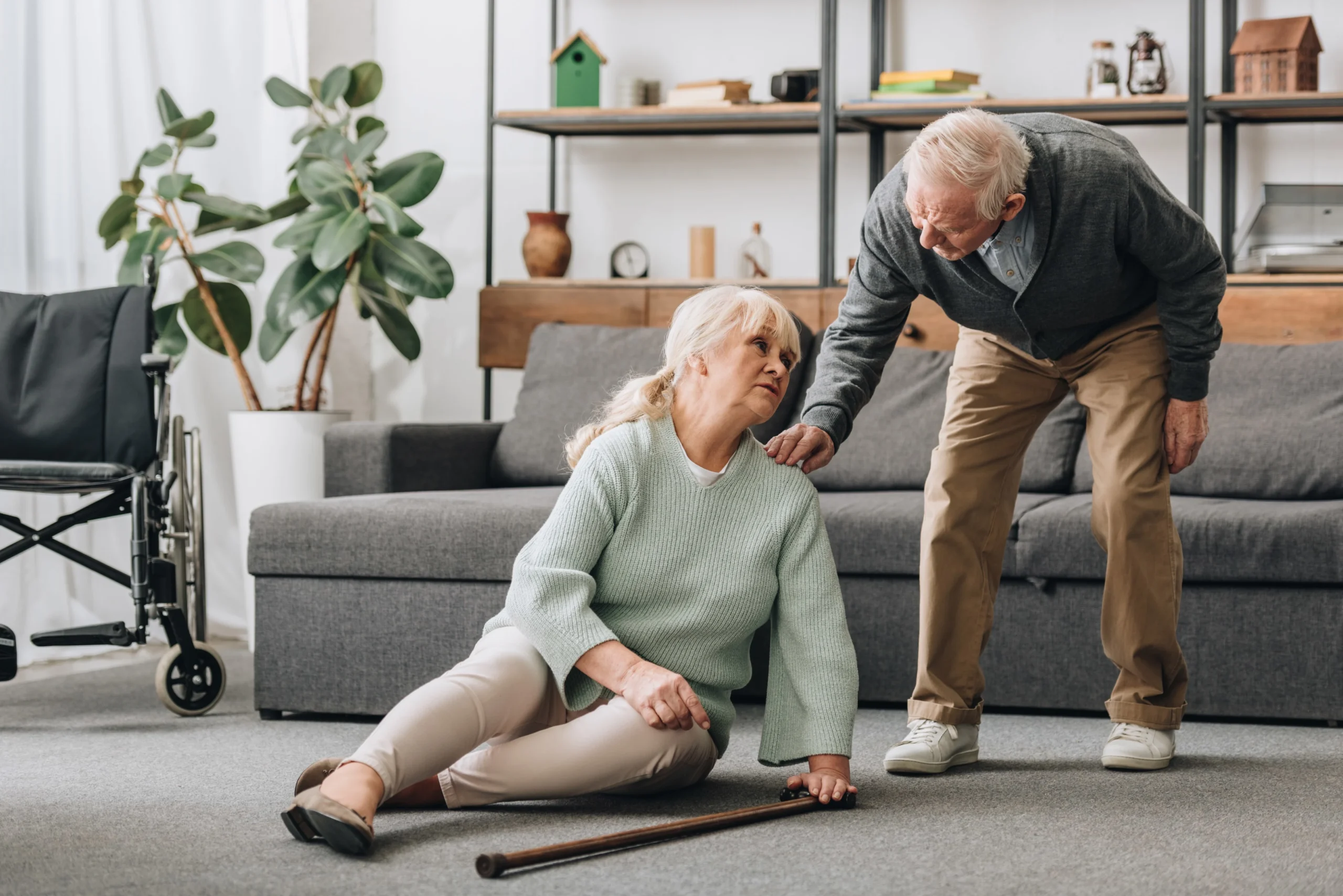(267) 778-9143

Publication date: August 11, 2025
Each year in the United States, millions of older adults – those 65 and older – fall, but most don’t report it to their doctor. Some physical changes occur naturally with aging, but you can remain independent and safe in your home as long as you take the necessary steps and plan accordingly.
By understanding the reasons behind these incidents, older people and their loved ones can gain insight and address them in a more informed manner. Effective prevention strategies create safe living environments that enable older people to lead active, confident lives.
This guide offers practical tips for minimizing fall risks, ranging from straightforward adjustments to daily life at home to recommendations for specialized equipment. Older adults can take charge of their environmental circumstances and implement established safety procedures, which will help them stay at home and significantly decrease the likelihood of suffering an injury.
The path to enhanced safety begins with learning, and each small step you take today can help make your future safer and more peaceful.
Several factors contribute to the increased vulnerability of older people, including physical changes and environmental threats. Acknowledging these factors enables families to design targeted prevention strategies that take into account their specific concerns and individual situations.
| Risk Category | Specific Factors | Impact on Stability |
| Physical Changes | Decreased muscle strength, balance issues, vision problems, and hearing loss. | Reduces the ability to detect hazards and react quickly to prevent tumbles. |
| Medical Conditions | Arthritis, diabetes, heart disease, dementia, Parkinson’s disease. | Creates mobility limitations and affects coordination or cognitive awareness. |
| Medications | Blood pressure drugs, sedatives, antidepressants, and pain relievers. | May cause dizziness, drowsiness, or changes in blood pressure, which can lead to unsteadiness. |
| Environmental Hazards | Poor lighting, loose rugs, cluttered walkways, and uneven surfaces. | Creates obstacles and hazardous conditions that increase the likelihood of accidents. |
| Footwear | Ill-fitting shoes, worn soles, high heels, slippery socks | Compromises grip and stability while walking on various surfaces |
Recognizing the interrelated nature of these risk factors enables families to develop comprehensive prevention plans that address multiple strands of vulnerability. All of these aspects require particular focus and specific interventions to optimize the impact of protection.
Systematic assessment and alteration of the home environment, making it as safe as possible for occupation, is integral to securing a safe place to live. These changes reduce environmental risks while also allowing for comfort and access to daily city activities.
These changes establish a sense of safety, enabling the user to move around their home with confidence. Additionally, removing items that clutter walkways, such as electrical cords or furniture that blocks a clear path, is crucial.
By adjusting the bed’s height, feet can rest flat on the floor while sitting on the side. Keeping everyday items in sight keeps a child from reaching or getting on their tiptoes. Bathroom lighting should be improved, and the installation of nightlights should be considered for safe movement in the dark. When it comes to things that are wrong underneath your feet, few are worse culprits than loose floorboards and uneven surfaces — or not being able to see where the steps go.
Special tools and aids are provided to assist the client, ensuring they will not run away or put themselves in danger alone, even on a bright day. When it comes to choosing which tools, it all comes down to an individual’s level of mobility, any underlying medical conditions, and specific home environment needs:
Medical professionals can help determine the most suitable equipment for specific situations and safety needs. In addition to these basics, wearing appropriate footwear with non-skid soles, low heels, and secure fastenings greatly enhances traction and stability during daily activities.
Reaching tools and grabbers allow you to access high or low items without stretching or climbing, and advanced lighting features, such as LED bulbs, motion sensors, and portable flashlights, enhance visibility throughout the home.
Stair lifts or ramps ensure safe access between levels for those who have trouble moving around. For those who do fall, hip protectors and padded clothing have been known to mitigate some of the impact of falls, providing an extra cushion of protection for those susceptible to accidental tumbles.

Physical well-being and good habits play a significant role in maintaining balance, strength, coordination, and preventing accidents. When physical health factors are also addressed, internal protection will complement safety equipment and environmental changes.
These health participation strategies can be combined with environmental interventions to produce complete protection strategies. Balancing exercises (like tai chi, yoga, or certain physical therapy routines) reduce wobbliness and instill confidence in movement.
Chronic care: Proper medical management of chronic conditions, such as diabetes, high blood pressure, and heart disease, reduces complications that would otherwise compromise coordination and strength. Look for warning signs of increased vulnerability, like dizziness, weakness, or confusion. Avoiding alcohol preserves coordination, judgment, and reaction times as they bear on driving.
Getting plenty of sleep keeps you more awake and less tired, Amen says, both of which can impact whether or not you’re involved in an accident or other risks. You may want to consider a physical therapy consultation for specific mobility issues and individualized exercise plans tailored to your needs and abilities.
Creating a comprehensive safety plan involves collaboration among family members, physicians, and the senior to assess every area of safety and prevention for various types of accidents. A systematic approach helps eliminate overlooking key factors while maintaining a focus on the most critical aspects.
This kind of holistic solution offers several shielding systems while allowing seniors the respect and freedom they deserve. It provides evidence-based protection by adopting recommendations from home safety and healthcare professionals for precautions. Preparing for issues that arise due to weather, such as ice removal, heating, and keeping your house safe from holiday decorating, are effective ways to protect against seasonal hazards.
It is essential to maintain safety devices, test them routinely, and educate family members to recognize signs of when a loved one is more vulnerable or has declining abilities, so that interventions can be made sooner rather than later. Professional skill is required for the efficient implementation of this preventive measure, which is facilitated by nursing assistance and medical supervision.
You are establishing yourself with local ambulance services, and you can also inform them of special medical needs.
Avoiding accidents among seniors requires a combination of environmental changes, the right equipment, healthy habits, and staying alert, delivering potent protection that allows seniors to age in place securely. This approach drastically reduces the likelihood of injury and offers peace of mind for everyone involved.

Inspiring you to live independently